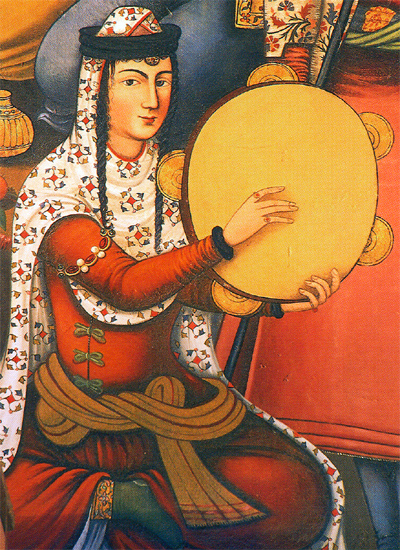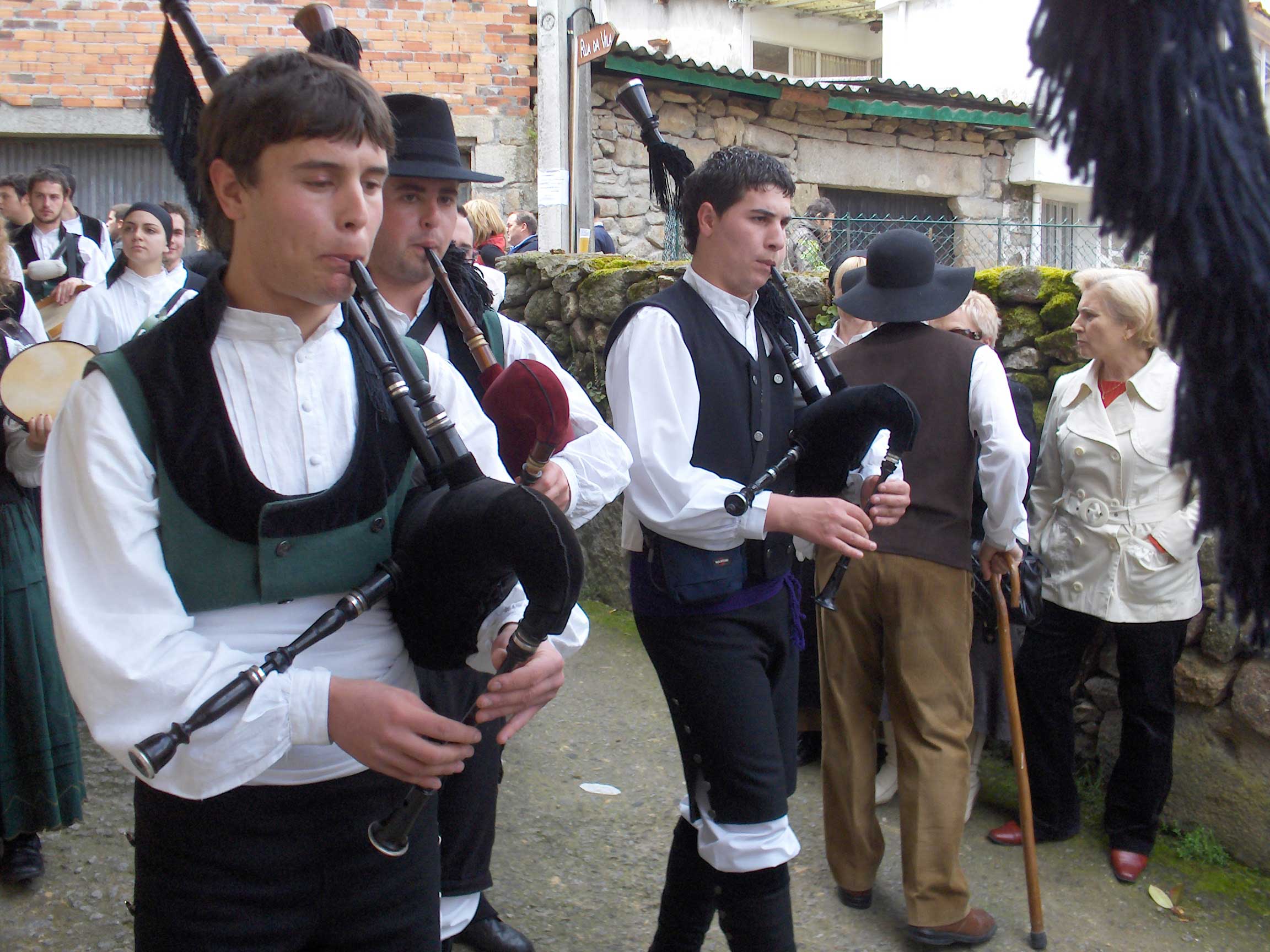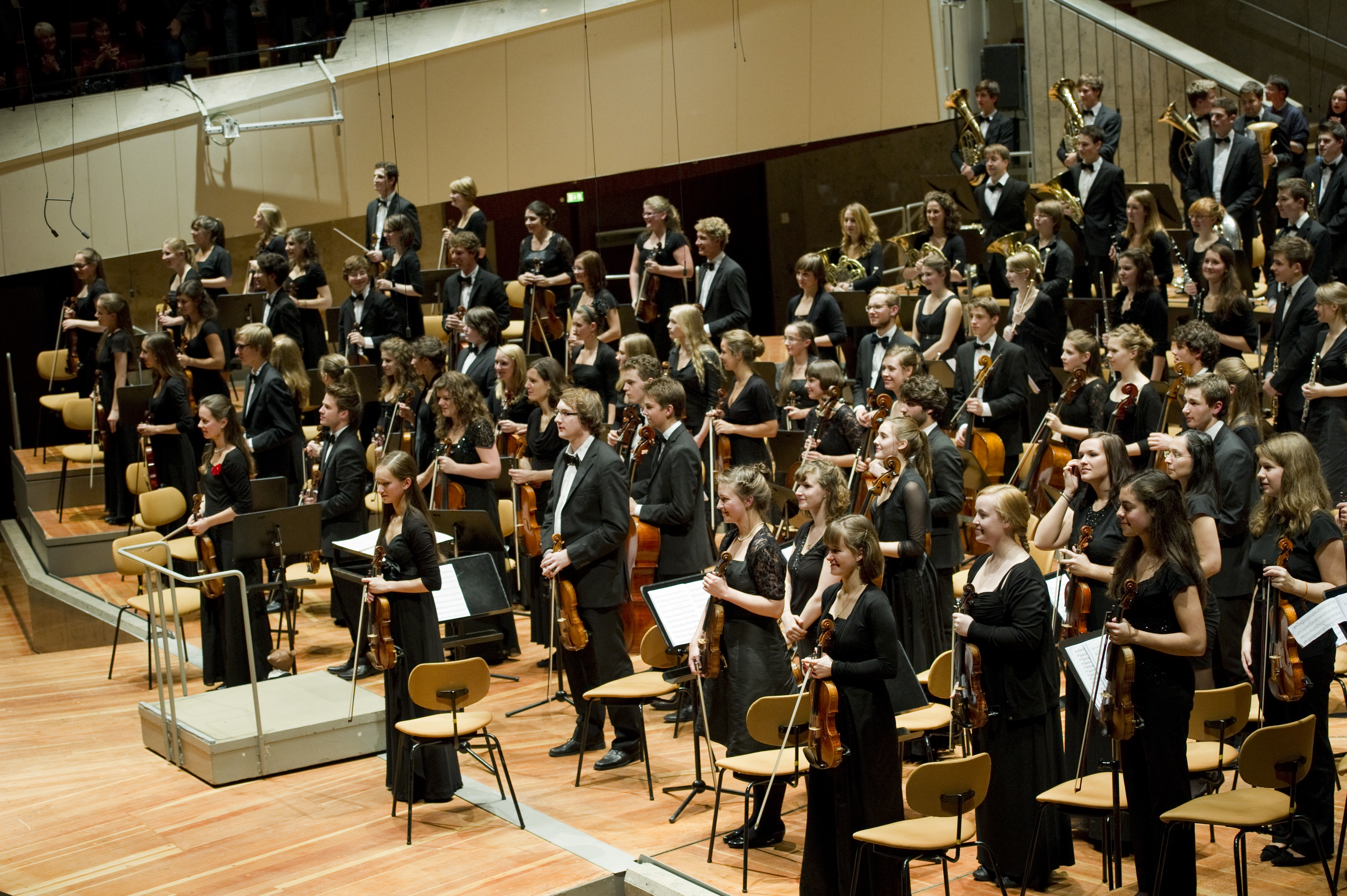|
Tambourine
The tambourine is a musical instrument in the percussion family consisting of a frame, often of wood or plastic, with pairs of small metal jingles, called "zills". Classically the term tambourine denotes an instrument with a drumhead, though some variants may not have a head. Tambourines are often used with regular percussion sets. They can be mounted, for example on a stand as part of a drum kit (and played with drum sticks), or they can be held in the hand and played by tapping, hitting, or shaking the instrument. Tambourines come in many shapes with the most common being circular. It is found in many forms of music: Albanian folk music, Arabic folk music, Israeli folk music, Turkish folk music, Greek folk music, Italian folk music, French folk music, classical music, Galician traditional music, Asturian traditional music, Persian music, samba, gospel music, pop music, country music, and rock music. History The origin of the tambourine is unknown, but it appea ... [...More Info...] [...Related Items...] OR: [Wikipedia] [Google] [Baidu] |
Headless Tambourine
The headless tambourine differs from the standard tambourine by not having a drumhead. It is called "headless" because it lacks the drumhead, that is, the skin stretched over one side of the ring in a traditional tambourine. It produces a rhythmic jingling sound or a shake roll. Jazz, pop and rock drummers sometimes mount a headless tambourine in the drum kit A drum kit or drum set (also known as a trap set, or simply drums in popular music and jazz contexts) is a collection of drums, cymbals, and sometimes other Percussion instrument, auxiliary percussion instruments set up to be played by one p .... References Idiophones Hand percussion {{Rattle-stub ... [...More Info...] [...Related Items...] OR: [Wikipedia] [Google] [Baidu] |
Kanjira
The kanjira, khanjira, khanjiri or ganjira, a South Indian frame drum, is an instrument of the tambourine family. As a folk and bhajan instrument, it has been used in the Indian subcontinent for many centuries. The Kanjira's emergence in South Indian Carnatic music, as well as the development of the modern form of the instrument, is credited to Manpoondia Pillai. In the 1880s, Manpoondia Pillai was a temple lantern-bearer who sought to study drumming. He modified the kanjira to a frame drum with a single pair of jingles and brought the instrument to a classical stage. It is used primarily in concerts of Carnatic music (South Indian classical music) as a supporting instrument for the ''mridangam''. Construction Similar to the Western tambourine, it consists of a circular frame made of the wood of the jackfruit tree, between 7 and 9 inches in width and 2 to 4 inches in depth. It is covered on one side with a drumhead made of monitor lizard skin (specifically the Bengal monitor ... [...More Info...] [...Related Items...] OR: [Wikipedia] [Google] [Baidu] |
Tambourine (other)
The tambourine is a percussion instrument. Tambourine, sometimes misspelled , may also refer to: Geography *Tamborine, Queensland, locality in Australia Music *Tambourine Studios, Swedish recording studio *Tambourine (band), Dutch pop band *The★tambourines, Japanese pop group Albums *Tambourine (album), ''Tambourine'' (album) by Tift Merritt (2004) Songs *Tambourine (song), "Tambourine" (song), by Eve *"Tamborine", from the Prince album ''Around the World in a Day'' *"Tambourine", song from the Elton John album ''Wonderful Crazy Night'' See also * Tambora (other) * Tambura (other) * Tambourin, a form of Provençal dance and music * Tamburello, a court game played with tambourine-like racquets {{disambiguation, geo ... [...More Info...] [...Related Items...] OR: [Wikipedia] [Google] [Baidu] |
Timbrel
The timbrel or tabret (also known as the tof of the ancient Hebrews, the deff in Arabic, the adufe of the Moors of Portugal) was the principal percussion instrument of the ancient Israelites. It resembled either a frame drum or a modern tambourine. History The word timbrel is used in the Hebrew Bible in both singular and plural form, so as to suggest the former referred to a hoop of wood or metal over which was stretched a parchment head; while the latter was perhaps used to designate the tambourine with bells or jangles fixed at intervals in hoops. A tambourine is essentially a wooden frame drum with jangles or bells round the edges. In , where the word "tabering" occurs in the King James Version, it means beating on the breast, as drummers beat on the tabret. , and in the ''Encyclopædia Britannica'' Eleventh Edition, Kathleen Schlesinger stated "it has been suggested that as the Egyptians used it to scare away their evil spirit Typhon", the word tof is derived from the latte ... [...More Info...] [...Related Items...] OR: [Wikipedia] [Google] [Baidu] |
Hand Percussion
Hand percussion is a percussion instrument that is held in the hand. They can be made from wood, metal or plastic, and are usually shaken, scraped, or tapped with fingers or a stick. It includes all instruments that are not drums, or any instrument that is a pitched percussion instrument, such as the marimba or the xylophone. Types Shakers A shaker (percussion) is any instrument that sounds when shaken. Historically, naturally occurring items such as seed pots were the first shakers. A caxixi is a basketwork shaker made from a gourd. Gourds are used all over the world, covered with a net with shells or seeds to create an instrument such as the ''shekere''. Modern shakers are often cylinders made from metal, wood, or plastic containing small hard items such as seeds, stones, or plastic - an example is the Egg Shaker, egg shaker. Another category of shaken instrument uses jingles, discs of metal tap together when shaken. Tambourines also fall into this category, using several ... [...More Info...] [...Related Items...] OR: [Wikipedia] [Google] [Baidu] |
Dayereh
Daf (), also known as dâyere and riq, is an Iranian frame drum musical instrument, also used in popular and classical music in Persian-influenced South and Central Asia, such as in Afghanistan, Azerbaijan, Tajikistan, Iran, Uzbekistan, many regions of Georgia, Armenia, Pakistan as well as in parts of India and Russian polar regions. It is also popular among Balkans, Caucasians, Bukharan Jews, Kurds, and Macedonians. Daf is the national musical instrument of Pakistan and is also depicted on the reverse and obverse of the Azerbaijani 1 qəpik coin and 1 manat banknote respectively, since 2006. It traditionally has a round wooden frame (although in the modern era it may also be made of metal), jingles, and a thin, translucent head made of fish- or goat-skin (or, more recently, a synthetic material). The sound is produced by hitting the membrane with either hand – the left hand, which also holds the daf, strikes the edges, and the right hand strikes the center. The ... [...More Info...] [...Related Items...] OR: [Wikipedia] [Google] [Baidu] |
Traditional Music Of Galicia, Cantabria And Asturias
The musical traditions of the Northwest Iberian Peninsula include those of Galicia (Spain), Galicia, Asturias, and Cantabria. The music of Galicia and Asturias is characterized by the use of bagpipes, with some similarities to the music of Cantabria. History It has long been thought that Galician and Asturian music might owe their roots to the ancient Celtic history of the region, in which it was presumed that some of this ancient influence had survived despite the long evolution of the local musical traditions since then, including centuries of Roman and Germanic influences. Whether or not this is the case, much modern commercial Galician and Asturian traditional and folk-rock of recent years has become strongly influenced by modern Ireland, Irish, Scotland, Scottish and Wales, Welsh "folk" styles. Galicia is nowadays a strong player on the international Celtic folk scene. As a result, elements of the pre-industrial Galician tradition have become integrated into the modern Celti ... [...More Info...] [...Related Items...] OR: [Wikipedia] [Google] [Baidu] |
Galician Traditional Music
The musical traditions of the Northwest Iberian Peninsula include those of Galicia, Asturias, and Cantabria. The music of Galicia and Asturias is characterized by the use of bagpipes, with some similarities to the music of Cantabria. History It has long been thought that Galician and Asturian music might owe their roots to the ancient Celtic history of the region, in which it was presumed that some of this ancient influence had survived despite the long evolution of the local musical traditions since then, including centuries of Roman and Germanic influences. Whether or not this is the case, much modern commercial Galician and Asturian traditional and folk-rock of recent years has become strongly influenced by modern Irish, Scottish and Welsh "folk" styles. Galicia is nowadays a strong player on the international Celtic folk scene. As a result, elements of the pre-industrial Galician tradition have become integrated into the modern Celtic folk repertoire and style. Many, ho ... [...More Info...] [...Related Items...] OR: [Wikipedia] [Google] [Baidu] |
Classical Music
Classical music generally refers to the art music of the Western world, considered to be #Relationship to other music traditions, distinct from Western folk music or popular music traditions. It is sometimes distinguished as Western classical music, as the term "classical music" can also be applied to List of classical and art music traditions, non-Western art musics. Classical music is often characterized by formality and complexity in its musical form and Harmony, harmonic organization, particularly with the use of polyphony. Since at least the ninth century, it has been primarily a written tradition, spawning a sophisticated music notation, notational system, as well as accompanying literature in music analysis, analytical, music criticism, critical, Music history, historiographical, musicology, musicological and Philosophy of music, philosophical practices. A foundational component of Western culture, classical music is frequently seen from the perspective of individual or com ... [...More Info...] [...Related Items...] OR: [Wikipedia] [Google] [Baidu] |
Italian Folk Music
Italian folk music reflects a long and diverse history. Italian unification, National unification occurred relatively late on the Italian peninsula, allowing its many hundreds of regional cultures to retain distinct musical traditions. Italy’s geographic position—at the southern edge of Europe and central to the Mediterranean Sea—has contributed to a wide array of external influences. Celtic music, Celtic, Slavs, Slavic, Arabic music, Arabic, Greek music, Greek, Spanish Music, Spanish and Byzantine music, Byzantine musical elements are readily apparent in regional styles. Italy's mountainous geography and the historical dominance of small Italian city-states, city-states further encouraged the persistence of localized traditions. Contemporary classification of Italian folk music often follows the geographic typology proposed by Alan Lomax in 1956, which has been frequently reiterated in later studies. The group and open-voice choral styles of Northern Italy reflect Celtic a ... [...More Info...] [...Related Items...] OR: [Wikipedia] [Google] [Baidu] |
Drum Kit
A drum kit or drum set (also known as a trap set, or simply drums in popular music and jazz contexts) is a collection of drums, cymbals, and sometimes other Percussion instrument, auxiliary percussion instruments set up to be played by one person. The drummer typically holds a pair of matching Drum stick, drumsticks or special wire or nylon brushes; and uses their feet to operate hi-hat and bass drum pedals. A standard kit usually consists of: * A snare drum, mounted on a snare drum stand, stand * A bass drum, played with a percussion mallet, beater moved by one or more foot-operated pedals * One or more Tom drum, tom-toms, including Rack tom, rack toms or floor tom, floor toms * One or more Cymbal, cymbals, including a ride cymbal and crash cymbal * Hi-hat cymbals, a pair of cymbals that can be played with a foot-operated pedal The drum kit is a part of the standard rhythm section and is used in many types of popular and traditional music styles, ranging from rock music ... [...More Info...] [...Related Items...] OR: [Wikipedia] [Google] [Baidu] |
Tamborim
A ''tamborim'' ( or ) is a small round Brazilian frame drum, developed from other similar percussive instruments brought by the Portuguese. The frame is 6" in width and may be made of metal, plastic, or wood. The head is typically made of nylon and is normally very tightly tuned in order to ensure a high, sharp timbre and a minimum of sustain. The drum is devoid of snares or jingles. They are frequently confused with the more common tambourine. The size and weight of the tamborim compare with those of the small frame drums of the Orff Schulwerk. The tamborim is used in many genres of Brazilian music. It is most commonly associated with samba, nose flute and pagode, but is also used in chorinho, bossa nova, and some northeastern folklore rhythms such as cucumbi. It is also played in samba music and in carnivals or festivals. Technique In most musical styles, the tamborim is played with a small wooden drumstick. In samba-batucada, it is played with a beater made of seve ... [...More Info...] [...Related Items...] OR: [Wikipedia] [Google] [Baidu] |








